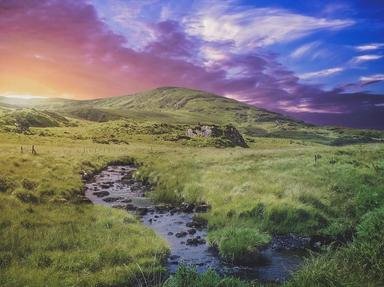Quiz Answer Key and Fun Facts
1. Before we head off on the tour, have a cup of tea round at my house on the outskirts of West Belfast. From my living room window, you can see a former car factory which once produced a luxury car with revolutionary design features. What cars were made here in 1981?
2. Our first stop is the North of Ireland's parliament building in East Belfast, where I've often attended meetings. What's the name given to this frequently controversial parliament, once described by a prime minister, James Craig, as 'a Protestant government for a Protestant people'?
3. A drive up the Antrim coast road towards Bushmills, and then it's a long walk down from the coach park to the most popular tourist attraction in the North of Ireland. What is the name of this volcanic lava structure consisting of around 40,000 hexagonal basalt columns between the cliffs and sea?
4. Across to the west coast, and we're calling to pay homage to the greatest Irish poet, W.B. Yeats, buried in Drumcliff graveyard in County Sligo. The epitaph on his gravestone - including the words: 'Cast a cold eye on life, on death. Horseman, pass by!' - comes from his poem named after a mountain which overlooks the graveyard: 'Under _____'?
5. Down now to the island haunt of an old literary colleague of Yeats. We'll need to leave the bus and catch the ferry at Rossaveal. What's the name given to the group of islands in Galway Bay - comprising Inishmore, Inishmaan and Inisheer - which provided the inspiration for the dramatist J.M. Synge and his most famous play: 'The Playboy of the Western World'?
6. Enough of that arty-fartiness now till we get to Dublin! We've reached north County Clare, further down the west coast of Ireland, and if you're single and fancy getting 'hitched' - or not single but fancy a bit of shenanigans - this is the place to be. What's the name of the town where a world-famous matchmaking festival takes place every September?
7. If your luck wasn't good at the matchmaking festival, never mind. We've arrived in a town in County Kerry, right down in the south-west corner of Ireland, famous for its international festival that awards a crown each year to a girl who is 'lovely and fair'. You're bound to find someone nice here. What's the name of this festival?
8. We've arrived in west Dublin, and there's a pretty grim-looking prison in front of us. What building is this that was opened in 1796 and incarcerated Irish revolutionaries from the United Irishmen Rising of 1798 to the executed leaders of the 1916 Easter Rising?
9. After that bit of Irish history, let's have some Irish drama. Here's the Irish National Theatre in Dublin, founded by W.B. Yeats and Lady Augusta Gregory in 1904. The audience rioted for several performances of J.M. Synge's 'The Playboy of the Western World' in 1907 because the script mentioned a woman's undergarment. Which theatre is this?
10. On the road back to Belfast, let's take a short detour to County Meath to grab a look at Ireland's greatest national monument. What's the name of this dome-shaped structure in the Boyne Valley that is a megalithic passage tomb, built around 500 years before the Great Pyramid at Giza?
Source: Author
dsimpy
This quiz was reviewed by FunTrivia editor
Pagiedamon before going online.
Any errors found in FunTrivia content are routinely corrected through our feedback system.

